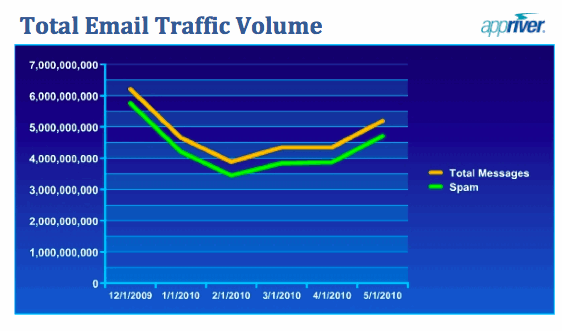The number of spam messages approached 6 billion for the month of January and never dipped below 3.5 billion during the past six months, according to SaaS e-mail and web security provider AppRiver’s mid-year Threat and Spamscape report.
The report also indicates that spam is not only annoying. It’s dangerous. Over 10 percent of the spam the company tracked during the period covered by the report contained a virus.
Topical themes continued to dominate the spam landscape.
• Targeted “spear phishing” attacks designed to steal carbon credits appeared for the first time.
• The Haitian earthquake spawned large amounts of spam.
• Phishing attacks dressed up like e-mail from the Internal Revenue Service were prevalent around tax time.
• World Cup-themed spam began to appear as early as January 2010.
Not all themes were related to the headlines. Facebook users were continuous targets. The most creative attempted exploit of the past six months was a malware attack that purported to announce a lawsuit against recipients.
The report cites 45 percent of all spam traffic originating from Europe during the six-month period, while the U.S. topped the list of spam-producing countries. The U.S. regained its top spamming spot over the former highest spamming country, Brazil. During the past six months, AppRiver also saw a major upswing in spam from Ukraine.

The report is a summary and analysis of spam and malware trends traced between January and June 2010 across 45,000 corporations and six million mailboxes.















